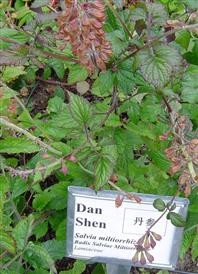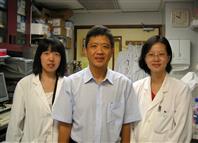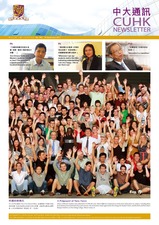In Hong Kong, many patients are desperate to get a hold of whatever medicine they believe would work, be it Chinese herbs or Western remedies. But the mixed use of Chinese and Western medicine can lead to serious consequences. Take the Chinese herb danshen (Savia miltiorrhiza), the root of a perennial plant. It looks thick and red, and tastes pungent and bitter. Danshen is known to have the effects of relieving blood stasis, alleviating pain, increasing blood circulation, facilitating smooth menstruation and widening blood vessels. It is ranked as a first-class herbal medicine in Shennong’s Herbal, a classical text on Chinese medicine. Danshen can be found in many over-the-counter Chinese herbal drugs for coronary heart disease and angina. However, patients on warfarin, which is commonly known as a blood thinner, should avoid danshen or any medicine with danshen as an ingredient.
‘Warfarin is an anticoagulant, which acts on the liver to decrease the quantity of a few key proteins in blood which allow blood to clot,’ explained Prof. Yeung Hok-keung John of the School of Biomedical Sciences. ‘It is usually prescribed to patients with arrhythmia or those who have undergone mechanical heart valve replacement. Danshen can improve blood circulation, just as ginseng does. That’s why folk wisdom advises against prescribing ginseng to pregnant women about to give birth or those who are going to have surgery for fear of haemorrhage. Both danshen and warfarin have the effect of anticoagulation. People should avoid using them together, otherwise their side effects like bruises, nosebleeding, gum bleeding, blood in urine will be exacerbated.’
Professor Yeung is an expert on drug metabolism and pharmacokinetics. When he joined the then Department of Pharmacology some 20 years ago, there were cases of interaction between danshen and warfarin. He was invited by Prof. Kelvin K.C. Chan to study danshen together, trying to unravel the mysteries of this herb-drug interaction. Chinese medicine has always been popular in mainland China, Hong Kong and many Asian regions. It is very common for people in these regions to use Chinese herbs and Western medicine alternatively or together. But he said, although people have long used Chinese herbs and Western medicine together, we still have a long way to go before we can be clear about the interactions between them. According to Professor Yeung, the studies on herbal medicine have gained considerable momentum because of the popularity of herbal health supplements in European and American countries.
‘Chinese and Western medicine are two totally different systems,’ said Professor Yeung. ‘In Western medicine, a drug must be a pure chemical, whose constituents and effects are clear. But Chinese medicine is characterized by its use of herbal compounds. A Chinese herbal concoction can comprise up to 20 different herbs. Their chemical compositions will change after decoction, making it very difficult to study that concoction. What we’re doing now is studying individual herbs, with focus on the interactions between traditional Chinese herbs or natural health products and Western medicine, and their safety in terms of drug metabolism and toxicity.’
For example, danshen contains over 40 constituents, including water-soluble phenolic acids and fat-soluable tanshinones. CUHK research shows that there is no metabolic interaction between the water-soluable constituents of danshen and Western medicine. But tanshinones can cause indirect metabolism in several drug-metabolizing enzymes. Drug metabolism refers to the duration and intensity of pharmacological action of drugs in the human body. A particular constituent in a Chinese herb may increase the rate of drug metabolism, thus decreasing the drug level in a patient’s body and making it ineffective. In the opposite case, it will potentiate the effects or side effects of the drug.
The pharmacological and toxicological interactions between danshen and warfarin are referred to as xiangchong (incompatibility) in Chinese medicine. This research result is generally accepted by the medicine community. Although there are skeptics who argue that this can be only seen as an isolated case due to the lack of comprehensive clinical trials. But the West has begun to understand that Chinese medicine is characterized by compound formulas. If Chinese herbs and Western medicine can complement each other, it may bring about a quantum leap in the development of medicine. The prerequisite of their integration is mutual acceptance. But is it necessary for a Chinese herb to be evaluated by a clinical trial, which is a must for Western medicine, before it can be accepted by the West? ‘It seems that there is no shortcut,’ said Professor Yeung. ‘Thanks to the more sophisticated equipment for detailed analyses of drug constituents, studies of Chinese medicine have come a long way in the past dozen years. Are Chinese herbs and Western medicine friends or foes? This question is a jigsaw puzzle with a hundred thousand pieces. We have just put together a few.’ 



































































































































































Social Bookmarks